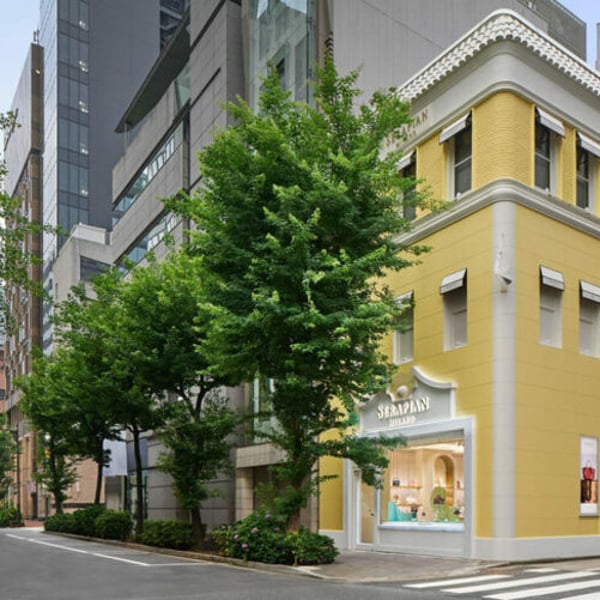Translated by
Roberta HERRERA
Published
Jul 8, 2024
Luxury houses are experiencing unprecedented success in Japan. For several months, the country has seen a record influx of tourists, including many Chinese visitors who had postponed their trips due to Covid restrictions. These visitors from around the globe are particularly drawn by the weak yen, which has plummeted to its lowest level against the dollar in nearly four decades, making Japan, a country known for its high costs, much more accessible. This has significantly boosted the consumption of luxury goods locally, although it also poses challenges to the Japanese economy.
The yen’s decline against the euro has further enhanced the influx of tourists. Since October 2023, the archipelago has returned to its pre-pandemic 2019 levels in terms of monthly visitors. In 2023, the number of tourists surged sixfold compared to 2022, according to the Japan National Tourism Organization, with their spending reaching 5.3 trillion yen (€32.7 billion), surpassing the 2019 record of 4.8 trillion yen.
This scenario has made Japan the most attractive destination in the Asia-Pacific region for luxury tourism, particularly in recent months. According to Luxurynsight, “duty-free prices in Japan compared to those in China dropped from -18% in June 2023 to -24% a year later, with prices for some brands plummeting by -27%. Japan is now even more attractive than France in terms of pricing,” noted the data analyst.
As a result, in the first quarter of 2024, the leading luxury groups recorded exceptional growth in Japan. During this period, LVMH‘s sales soared by 32% in organic growth, Hermès‘ sales surged by 25% (the leather goods maker has just opened a new store in Tokyo’s Mitsukoshi Ginza shopping center), and Prada‘s sales increased by 29%.
Kering‘s retail sales in Japan rose by 16%. Notably, Saint Laurent, which saw its global revenue drop by 8% and its retail sales by 4% in the first quarter, recorded a remarkable 34% increase in Japan. Direct sales from the “other houses” division, including Balenciaga, exploded by 40%. Even Gucci‘s sales in Japan grew by 7%.

A recent report by Bain & Company highlights that tourist flows have increased by 10 to 15% compared to 2019, driven by an influx of new nationalities to Japan, including Americans and Europeans, alongside traditional Asian travelers (Chinese, Hongkongers, Koreans, Taiwanese, Thais, Singaporeans, Vietnamese, etc.). “This has resulted in a significant increase in tourism from around the world, benefiting both traditional destinations and emerging luxury spots across the country,” the consultancy noted.
However, Bain & Company also pointed out the potential risks of this tourist rush in luxury boutiques. They warn against “overcrowded stores preventing local customers from shopping” and a neglected local clientele who feel less well served. This is particularly true in the ready-to-wear sector, where “efforts in clienteling are diverted from local Very Important Clients.” The weak yen fuels inflation, causing the Japanese to restrict their spending. Nevertheless, the wealthiest consumers continue to buy, Bain & Company reminded us.
These high-net-worth individuals are often treated the same as tourists, despite being pivotal to the rise in high jewelry sales, which have seen a more modest price increase. Timeless leather goods have also spurred “investment purchases” by the local clientele while benefiting from the significant tourist influx. This underscores the importance for brands to continue pampering local buyers, especially as the tourist influx might diminish if the yen strengthens.
Bain & Company recommends “adjusting prices to rebalance interregional differentials, which weaken the purchasing power of local customers,” aiming to retain aspirational clients. Similarly, Luxurynsight emphasizes the need for luxury brands to closely monitor their pricing strategy and global competition, considering changes in sales taxes and local currencies to ensure a comprehensive understanding of global dynamics and commercial shifts.
Copyright © 2024 FashionNetwork.com All rights reserved.







